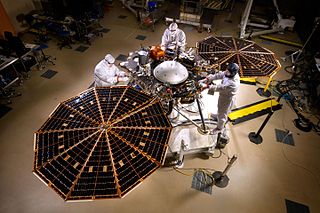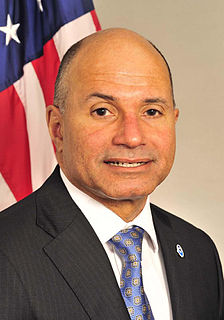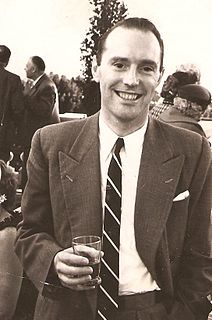
Engineering is the use of scientific principles to design and build machines, structures, and other items, including bridges, tunnels, roads, vehicles, and buildings. The discipline of engineering encompasses a broad range of more specialized fields of engineering, each with a more specific emphasis on particular areas of applied mathematics, applied science, and types of application. See glossary of engineering.

Charles Milles Manson was an American criminal and musician who led the Manson Family, a cult based in California, in the late 1960s. Some of the members committed a series of nine murders at four locations in July and August 1969. In 1971, Manson was convicted of first-degree murder and conspiracy to commit murder for the deaths of seven people, including the film actress Sharon Tate. The prosecution contended that, while Manson never directly ordered the murders, his ideology constituted an overt act of conspiracy.
Leslie Earl Robertson was an American engineer. He was the lead structural engineer of the Twin Towers of the original World Trade Center in New York City, and served as structural engineer on numerous other projects, including the U.S. Steel Tower in Pittsburgh, Shanghai World Financial Center, and the Bank of China Tower in Hong Kong.
Tung-Yen Lin was a Chinese-American structural engineer who was the pioneer of standardizing the use of prestressed concrete.
The year 1876 in science and technology involved some significant events, listed below.

The Colorado River Aqueduct, or CRA, is a 242 mi (389 km) water conveyance in Southern California in the United States, operated by the Metropolitan Water District of Southern California (MWD). The aqueduct impounds water from the Colorado River at Lake Havasu on the California-Arizona border, west across the Mojave and Colorado deserts to the east side of the Santa Ana Mountains. It is one of the primary sources of drinking water for Southern California.
Hans Albert Einstein was a Swiss-American engineer and educator, the second child and first son of Albert Einstein and Mileva Marić. Hans A. Einstein was a long-time professor of Hydraulic Engineering at the University of California, Berkeley.
Walter Gwynn was an American civil engineer and soldier who became a Virginia Provisional Army general and North Carolina militia brigadier general in the early days of the American Civil War in 1861 and subsequently a Confederate States Army colonel. He was a railroad engineer and railroad president before the Civil War, Florida Comptroller in 1863 and a civil engineer after the Civil War.

Rapid Engineer Deployable Heavy Operational Repair Squadron Engineer squadrons are the United States Air Force's heavy-construction units. Their combat engineering capabilities are similar to those of the U.S. Navy Seabees and U.S. Army heavy-construction organizations.

Chi Epsilon (ΧΕ) is an American civil engineering honor society. It honors engineering students in the United States who have exemplified the "principles of scholarship, character, practicality, and sociability...in the civil engineering profession." There are currently 141 chapters, of which 137 are active, where over 125,000 members have been inducted. Chi Epsilon is a 501c(3) non-profit organization, with Platinum Certification by www.guidestar.org. As of Feb 2022, Chi Epsilon does not have an active President, Executive Director, or Board of Directors, and its website is unavailable pending restructuring by the remaining members of Chi Epsilon's National Council.

John Ripley Freeman was an American civil and hydraulic engineer. He is known for the design of several waterworks and served as president of both the American Society of Civil Engineers and the American Society of Mechanical Engineers.

Thomas Joseph Robert Hughes is a Professor of Aerospace Engineering and Engineering Mechanics and currently holds the Computational and Applied Mathematics Chair (III) at the Oden Institute at The University of Texas at Austin. Hughes has been listed as an ISI Highly Cited Author in Engineering by the ISI Web of Knowledge, Thomson Scientific Company.
Arthur Newell Talbot was an American civil engineer. He made many contributions to several engineering fields including structures, sewage management, and education. He is considered to be a pioneer in the field of reinforced concrete.
John Lloyd Newcomb was an American educator. He served as the second president of the University of Virginia, ascending to the position after the death of Edwin Alderman. Newcomb, a member of the engineering faculty of the university, oversaw the university through the Depression and the Second World War and managed its physical expansion, including the building of Scott Stadium, the Bayly Art Museum, and Alderman Library.

Franklin Thompson Matthias was an American civil engineer who directed the construction of the Hanford nuclear site, a key facility of the Manhattan Project during World War II.

Frederick C. Finkle was an American consulting engineer and geologist. He was Chief Engineer or Consulting Engineer on eighteen major dams to impound water for domestic use, power and irrigation in California and other Western States.

Manson K. Brown is an American retired U.S. Coast Guard Vice Admiral (VADM) and public official. His top military decoration is the Coast Guard Distinguished Service Medal. In 1994, he became the first recipient of the Coast Guard Captain John G. Witherspoon Award for Inspirational Leadership. In 2012, he was honored with the Golden Torch Award by the National Society for Black Engineers. In 2014, he was honored by the National Association for the Advancement of Colored People with the Meritorious Service Award, an honor annually bestowed to a service member in a policy-making position for the highest achievement in military equal opportunity. Off duty, he is an active road cyclist.

Harry Bolton Seed was an educator, scholar, former Professor at the University of California, Berkeley. He was regarded as the founding father of geotechnical earthquake engineering.

Verena Winifred Holmes was an English mechanical engineer and multi-field inventor, the first woman member elected to the Institution of Mechanical Engineers (1924) and the Institution of Locomotive Engineers (1931), and was a strong supporter of women in engineering. She was one of the early members of the Women's Engineering Society, and its president in 1931. She was the first practising engineer to serve as president of the society.

The Architectural and Engineering Works Department was the main civil engineering department of the British Royal Navy responsible constructing, and maintaining naval buildings, dockyards, ports and managing civil engineering staff from 1837 to 1919 it was superseded by the Civil Engineer in Chief's Department.












